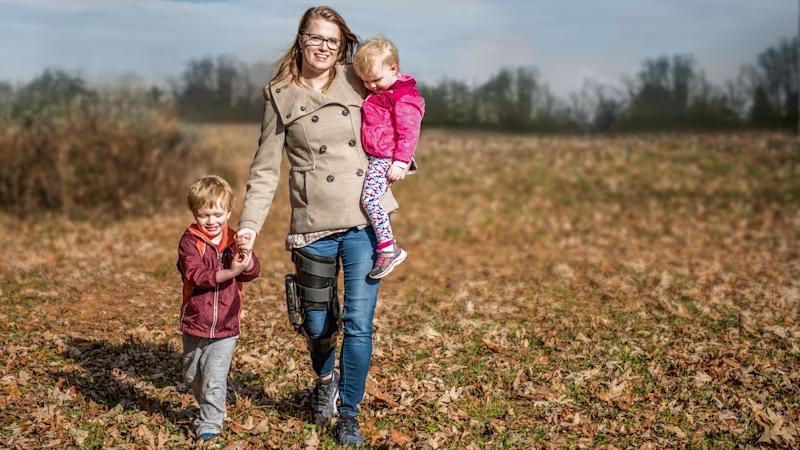Inestabilidad del hombro
Las causas de una inestabilidad del hombro son dispares. La fisioterapia y las órtesis son componentes importantes de un tratamiento de éxito.
Causas, síntomas y tratamiento
La articulación del hombro es una de las tres articulaciones verdaderas de la cintura escapular. Se trata de una articulación muy móvil reforzada por músculos. Existen diferentes factores que pueden llevar a una instabilidad en la región de los hombros.
Ottobock supports and orthoses

Causas
Un hombro inestable puede tener diferentes causas. En algunos casos, unas estructuras ligamentosas capsulares demasiado holgadas o trastornos en la función muscular son el desencadenante de la situación de inestabilidad en la articulación del hombro. En otros casos, las causas son de origen traumático y posoperatorio.
La inestabilidad del hombro hace referencia, a menudo, a la articulación escapulohumeral (articulación glenohumeral). En casos graves, sin embargo, puede estar afectada la cintura escapular completa con las tres articulaciones verdaderas y las dos articulaciones falsas.
Una inestabilidad puede provocar una luxación. En este caso, la cabeza del húmero no se encuentra ya, como es normal, en la cavidad glenoidea formada por los huesos de la escápula.
Síntomas
Uno de los síntomas principales de una luxación aguda del hombro acaecida, por ejemplo, por unas estructuras ligamentosas capsulares demasiado laxas, es la limitación dolorosa de la movilidad de la articulación del hombro. También pueden aparecer dolores espontáneos y de movimiento y deformación del hombro con irregularidades en el acromion. En muchos casos existe un daño vascular y en los nervios de la región axilar, lo que puede provocar trastornos circulatorios y, con ello, sensaciones desagradables en el brazo.
Diagnóstico
El responsable de determinar la existencia de una inestabilidad del hombro es el ortopeda con ayuda de una anamnesis exhaustiva y de un estudio diagnóstico. La pruebas imagenológicas, como los rayos X, la tomografía computarizada (TC) y la tomografía por resonancia magnética (TRM), aportan más información sobre el estado exacto del hombro. De este modo, al mismo tiempo puede confirmarse o excluirse una lesión concomitante de los músculos.
Terapia
A pesar de que el tratamiento de una inestabilidad del hombro depende de cada caso concreto, por lo general se trata de modo conservador mediante fisioterapia. Aquí se presta especial atención a que toda la región del hombro esté suficientemente estable desde una perspectiva muscular. Se emplean con regularidad órtesis para que movimientos descontrolados no puedan retrasar la recuperación.
Si no solo hubiera presente una simple flacidez de los ligamentos, sino también lesiones consecuentes, a menudo es necesario un tratamiento quirúrgico con la consiguiente rehabilitación e inmovilización de la zona intervenida durante 3 a 12 semanas. Por medio de fisioterapia específica, drenaje linfático y terapia de movilidad se busca restablecer el estado original. También aquí el uso de órtesis puede contribuir a estabilizar la articulación y a prevenir dolores innecesarios.
Volver a la vida cotidiana: en 3 pasos hasta la órtesis de Ottobock
- Aquí encontrará un resumen de las órtesis y correajes que pueden ser adecuados para usted. Lleve consigo esta lista la próxima vez que acuda al médico.
- Consulte a su médico cuál de las órtesis es la más adecuada para su cuadro clínico. Seguidamente, su médico le extenderá una receta para la órtesis correspondiente.
- Acuda con la receta a una ortopedia. Allí recibirá su nueva órtesis después de haberse adaptado con precisión a sus medidas corporales.